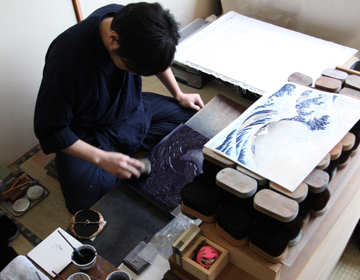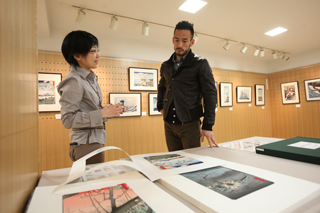 |
Culture to enjoy the timesUkiyo-e. There are fans and collectors all over the world, and it is one of the leading arts of Japan. It prospered during the Edo period and was popular among the commoners. Originally, the word ”Ukiyo-e” derived from the word ”uki yo”, expressing concern towards reality and how the world is full of lament. Later in the Edo period, the world became peaceful and the word was altered to ”ukiyo,” meaning ”to enjoy the times”. |
Making the Woodcut for Ukiyo-e”Popular prints were often used for printed materials and commercialized, so many prints were made, some to the point that the woodblocks were worn down. Additional editions were often printed. Famous Ukiyo-e were printed numerous times, and the woodcuts shrank and wore out, eventually causing the colors to shift or become patchy. That is why the first editions generally have more value.” |
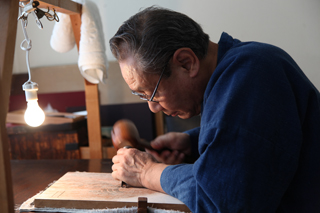 |
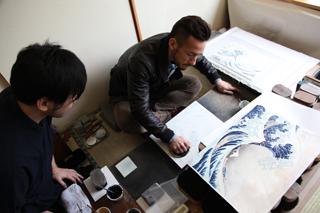 |
Trying the printingWe observed the ”printing process” after hearing the explanation. Before our very eyes, ”Thirty-six Views of Mt. Fuji, Big Waves off Kanagawa” of Katsushika Hokusai is printed. The most difficult part is to keep the 2 registrations marks, ”kento”, on the woodblocks in line to keep it from slipping out of position. Nakata gave it a try and found it was extremely difficult to fit the paper in its place. |
Challenges for the Modern Ukiyo-e”Since Ukiyo-e was purchased by the masses, availability was based on the level of productivity. But to think commoners had access to such high quality art!” |
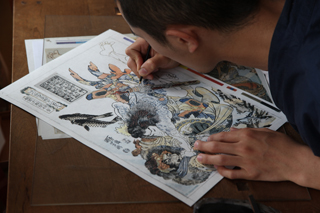 |
ACCESS
- The Adachi Institute of Woodcut Prints
- 3-13-17 Shimoochiai Shinjuku Tokyo
- URL http://www.adachi-hanga.com/
 Discovering Japan [Nihon] through authentic craftsmanship [Honmono]
Discovering Japan [Nihon] through authentic craftsmanship [Honmono]